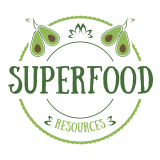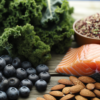The Ultimate Guide to Buying Superfoods: What to Look For
Introduction
Welcome to your go-to guide on navigating the world of superfoods! In today’s health-conscious society, superfoods are all the rage due to their high nutrient content and potential health benefits. But what exactly makes a food a “superfood,” and how do you choose the best ones? This guide is designed to help you make informed choices about which superfoods to incorporate into your diet to enhance your overall health and well-being. Whether you’re a seasoned health enthusiast or just beginning your journey into healthy eating, we’ve got you covered with the knowledge you need to shop smart. Join us as we dive into the world of superfoods, exploring what they are, why they’re beneficial, and how to select the very best options available.
Understanding Superfoods
 Image courtesy: Pexels
Image courtesy: Pexels
Definition and Benefits
Superfoods is a term that has gained popularity in health and wellness circles, but what exactly does it mean? Essentially, superfoods are foods that are exceptionally rich in vitamins, minerals, antioxidants, and other nutrients that are beneficial for one’s health. These nutrient powerhouses provide large doses of antioxidants, polyphenics, vitamins, and minerals. Consuming a diet rich in superfoods can help improve heart health, weight management, energy levels, and overall longevity.
The benefits of integrating superfoods into your diet are extensive. They can help reduce the risk of chronic diseases such as heart disease, cancer, and diabetes. They also enhance the immune system, reduce inflammation, and promote a healthy complexion. Furthermore, because they are so nutrient-dense, they can aid in maintaining a healthy body weight by providing satiety with fewer calories.
Examples of Common Superfoods
Some superfoods have gained more spotlight than others, thanks to their high nutrient profiles and ease of incorporation into daily diets. For example, blueberries are prized for their high antioxidant content, which can protect the body from damage by free radicals. Quinoa is celebrated not only as a gluten-free grain but also as a complete protein, containing all nine essential amino acids. Other common superfoods include kale, which is packed with vitamins A, C, and K, as well as omega-3 fatty acids; salmon, known for its rich omega-3 fatty acid content that supports cardiovascular health; and almonds, which are a great source of vitamin E, magnesium, and protein.
Chia seeds, acai berries, and green tea are also celebrated for their potent health benefits. Chia seeds deliver a massive amount of nutrients with very few calories. They are high in antioxidants and full of fiber, magnesium, zinc, iron, and calcium. Acai berries are incredibly rich in antioxidants and improve cholesterol levels. Lastly, green gotcha, which contains a type of antioxidant known as catechins, helps to significantly enhance the immune system and prevents cell damage.
Key Factors to Consider When Buying Superfoods
Nutrient Content
To truly benefit from superfoods, it’s crucial to consider their nutrient content while purchasing. Always check the labels to ensure you’re getting the most nutrient-dense options. For instance, with berries, look for those that are deep in color, which usually indicates a higher antioxidant content. When selecting grains like quinoa or chia seeds, opt for the whole grain version to ensure you benefit from all the natural nutrients found in the bran and germ parts of the grain.
It’s also vital to read through product descriptions and nutritional facts for processed superfoods, such as bars or powders. Some processed foods may have added sugars or preservatives that can diminish their nutrient value. Choosing products with minimal and recognizable ingredients can help maintain the integrity of the superfoods you include in your diet.
Organic vs. Conventional
Deciding between organic and conventional superfoods can greatly affect the purity and potential health benefits of the food. Organic produce is grown without synthetic pesticides and fertilizers, which means it might offer a better nutrient profile and is generally considered safer for consumption. Studies have suggested that organic fruits and vegetables can have higher levels of certain nutrients, including antioxidants.
If price or availability of organic options is a concern, refer to the Environmental Working Group’s (EWG) annual list of the ‘Dirty Dozen’—a list of fruits and vegetables with high pesticide residue—to decide where it might be worth spending extra on organic and where conventional might suffice.
Seasonality and Freshness
The seasonality of superfoods can significantly impact their nutritional value. Locally sourced seasonal produce usually retains more nutrients compared to out-of-season counterparts which are often picked before they’re ripe and transported long distances. Always aim for the freshest and ripest options available. For example, buying berries in summer and apples in fall ensures you get the fruits at their peak flavorful and nutritious state.
Furthermore, the freshness of a superfood affects its efficacy. Fresh, raw nuts and seeds will provide more health benefits than those that have been sitting on store shelves for months. To ensure you’re getting the freshest superfoods, check for a “packed on” or “sell by” date where possible and always opt for stores that maintain a quick turnover of their produce and perishable goods.
Shopping Tips for Purchasing Superfoods
When embarking on your journey to integrate more superfoods into your diet, it’s essential to shop smart. Here’s how you can make wise choices without overspending or compromising on quality.
Budget-Friendly Options
Believe it or not, adding superfoods to your diet doesn’t have to break the bank. Here are a few tips to keep in mind:
– Buy in bulk: Many health food stores offer superfoods like quinoa, nuts, and seeds in bulk bins. Buying in bulk is typically cheaper and allows you to purchase exactly the amount you need.
– Choose frozen options: Frozen fruits and vegetables often retain their nutrients better than their fresh counterparts and can be less expensive. Look for frozen berries, spinach, and kale, which are great for smoothies and cooking.
– Seasonal shopping: Purchase superfoods that are in season. They are not only cheaper but also at their peak in flavor and nutrients. For instance, buy berries in summer and kale in fall.
– Local markets: Explore local farmers’ markets for fresh and affordable superfoods. Farmers often offer competitive prices compared to grocery stores.
Store Selection – Where to Buy Superfoods
Finding the right place to buy superfoods can be just as important as the foods themselves. Consider the following:
– Health food stores: These are ideal for finding a wide variety of organic and specialty superfoods. Staff here can also be a great resource for advice on usage and benefits.
– Online retailers: Many online stores specialize in superfoods and often offer discounts and bulk options that physical stores might not.
– Supermarkets: Many large supermarkets now carry an array of superfoods. Check both the organic section and regular aisles.
– Local co-ops: These can be excellent sources for fresh, organic produce and other superfood options, often with a focus on local and sustainable agriculture.
Reading Labels and Understanding Ingredients
Understanding food labels is crucial in choosing the best superfoods. Here’s what to watch for:
– Look for whole ingredients: Ensure the product contains whole, unprocessed components rather than extracts or concentrates.
– Avoid added sugars and artificial ingredients: Many products marketed as superfoods are processed and packed with unhealthy additives. Read the labels carefully to avoid these.
– Gut Check for allergens: If you have dietary restrictions or allergies, always check labels to ensure there aren’t hidden allergens.
– Certifications: Look for labels like USDA Organic, Non-GMO Project Verified, or Fair Trade Certified, which can indicate a higher product quality and ethical sourcing.
Incorporating Superfoods Into Your Diet

Once you’ve purchased your superfoods, the next step is knowing how to include them in your meals effectively. Here are some tips for cooking and pairing these nutrient-rich foods.
Cooking and Preparation Methods
The method of preparing superfoods can affect their nutritional benefits. Here are some general guidelines:
– Steaming: This method helps in retaining the maximum nutrients in vegetables like broccoli and spinach.
– Raw: Foods like berries, nuts, and seeds are best consumed raw to preserve their vitamins, minerals, and antioxidants.
– Blending: Making smoothies is a great way to enjoy a mix of superfoods at once. Blending helps in breaking down the food for better nutrient absorption without removing any fiber.
Superfood Combinations for Maximum Benefits
Combining different superfoods can enhance their nutritional benefits. Here’s how to pair them for the best impact:
– Vitamin C and Iron: Foods rich in vitamin C (like strawberries and citrus fruits) can help enhance iron absorption from plant sources (like spinach and kale).
– Healthy fats and vegetables: Consuming vegetables with a source of healthy fats (like avocados or nuts) can increase the absorption of fat-soluble vitamins (A, D, E, K).
– Turmeric and black pepper: Adding black pepper to turmeric (in curries or golden milk) can boost the absorption of curcumin, the active ingredient in turmeric, by up to 2000%.
Incorporating superfoods into your diet can be a fun and enriching experience, especially when you know what to look for and how to use them. With these practical tips, you’ll be able to enhance your diet and enjoy the vast health benefits that superfoods offer.
Conclusion
When it comes to supercharging your diet with superfoods, the most critical thing is to choose items that not only are dense in nutrients but also align with your personal health goals and dietary preferences. Remember to consider factors like organic certifications, seasonality, and local sourcing to maximize the health benefits while supporting sustainable practices. With these tips in hand, you’re all set to make informed, health-driven choices on your next grocery run. Here’s to a healthier you!










